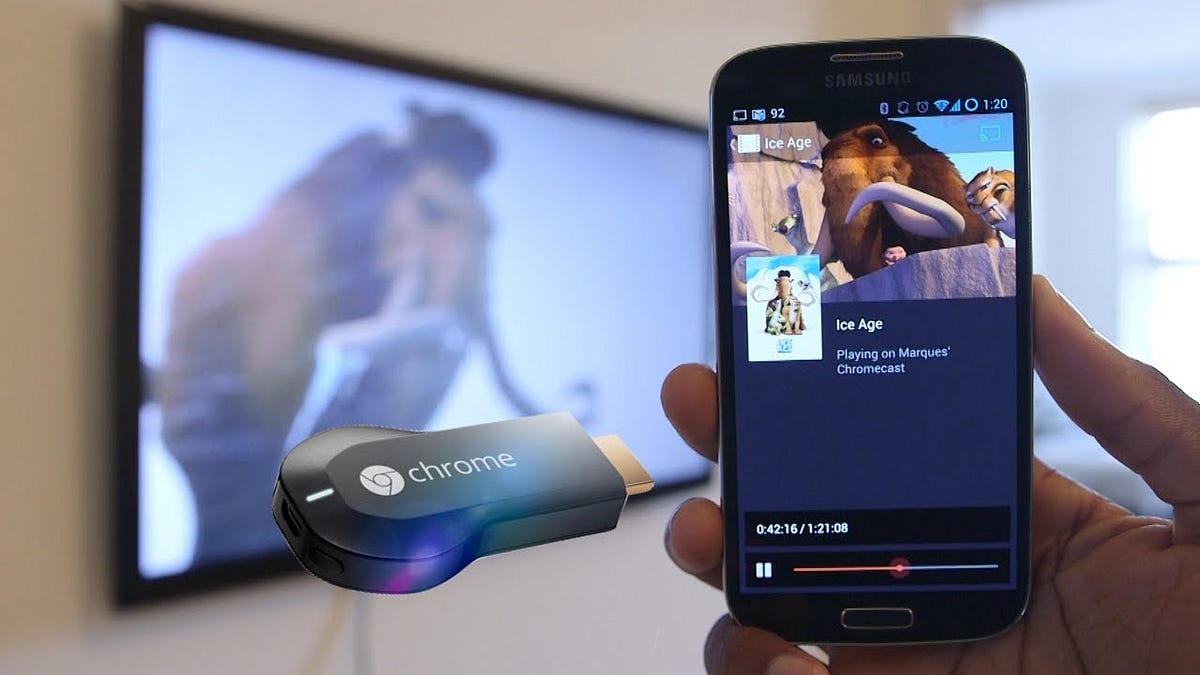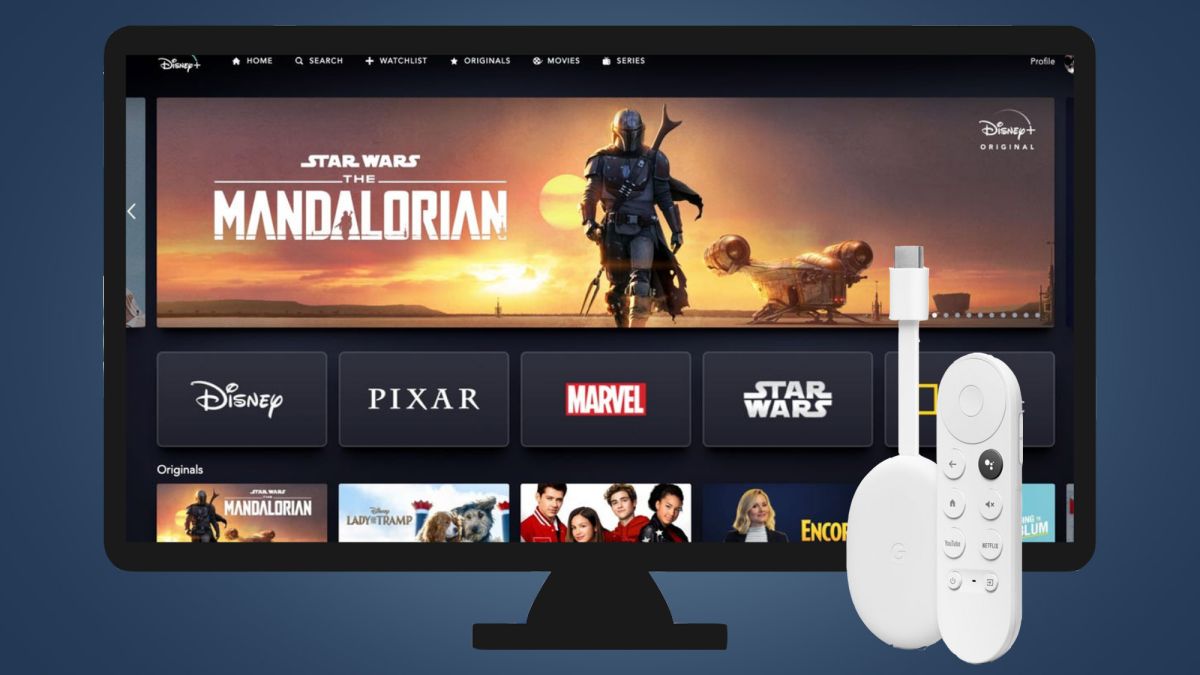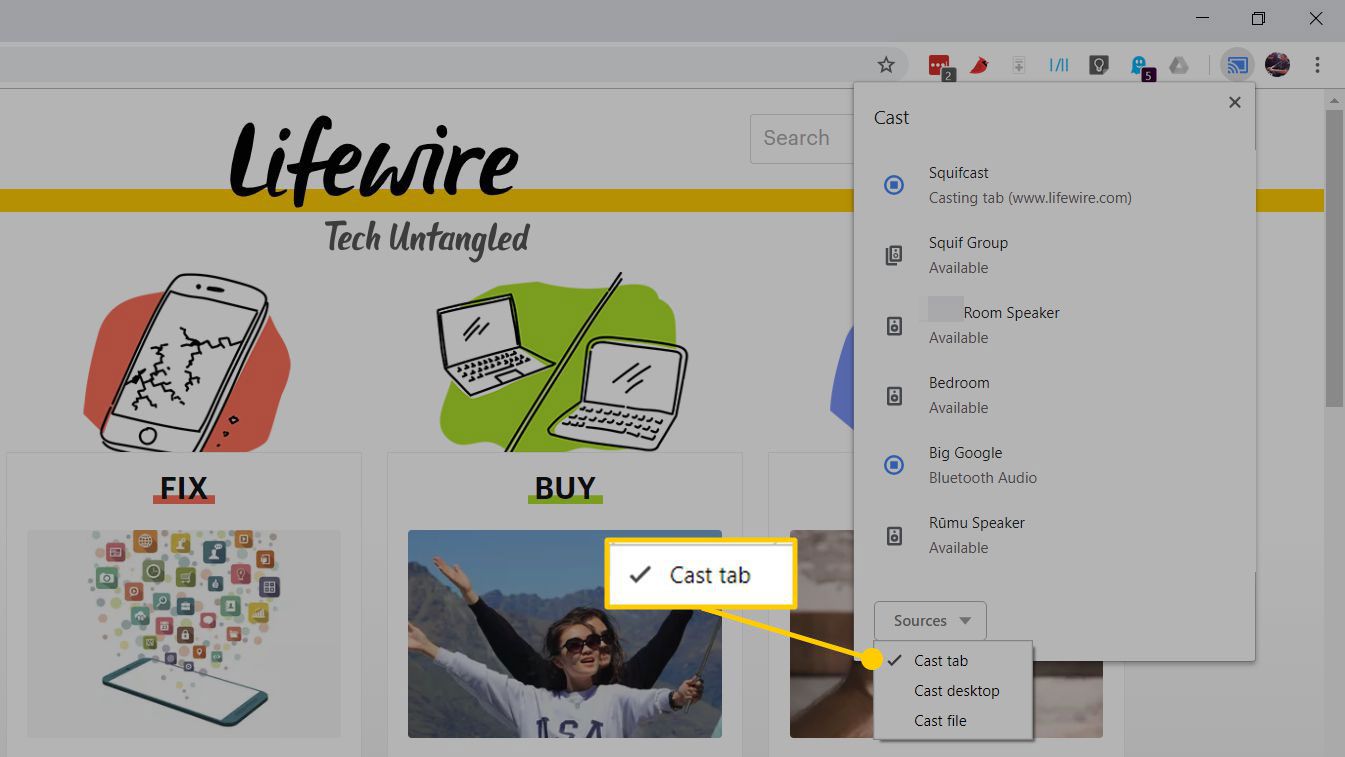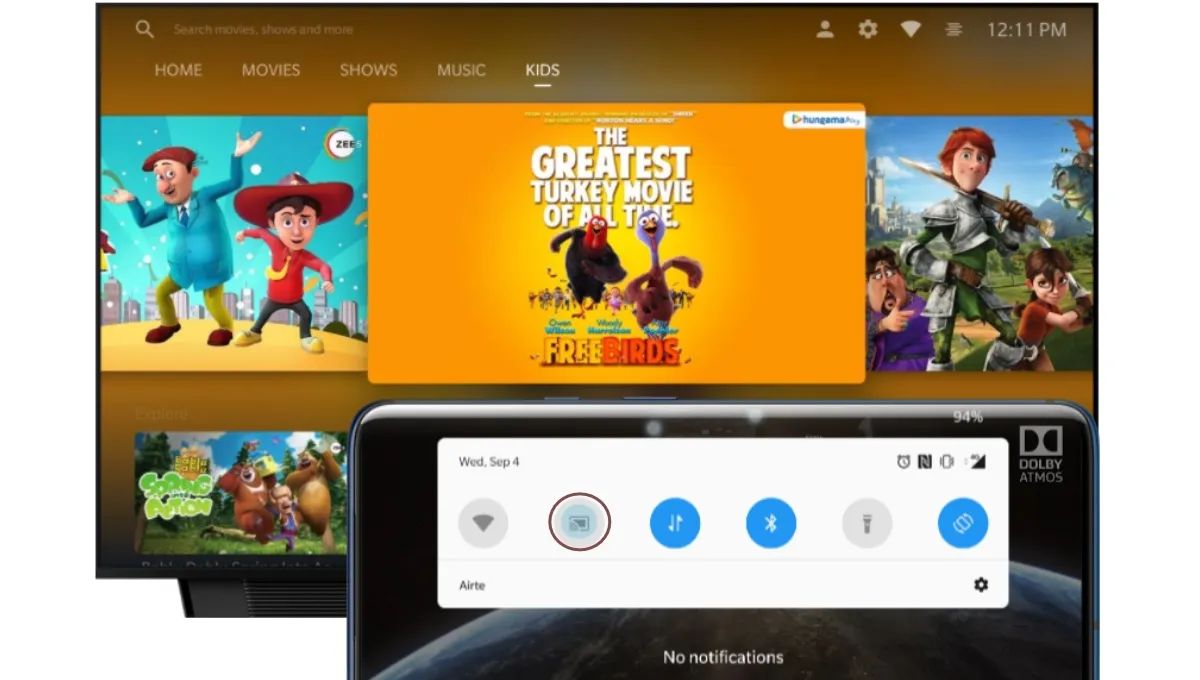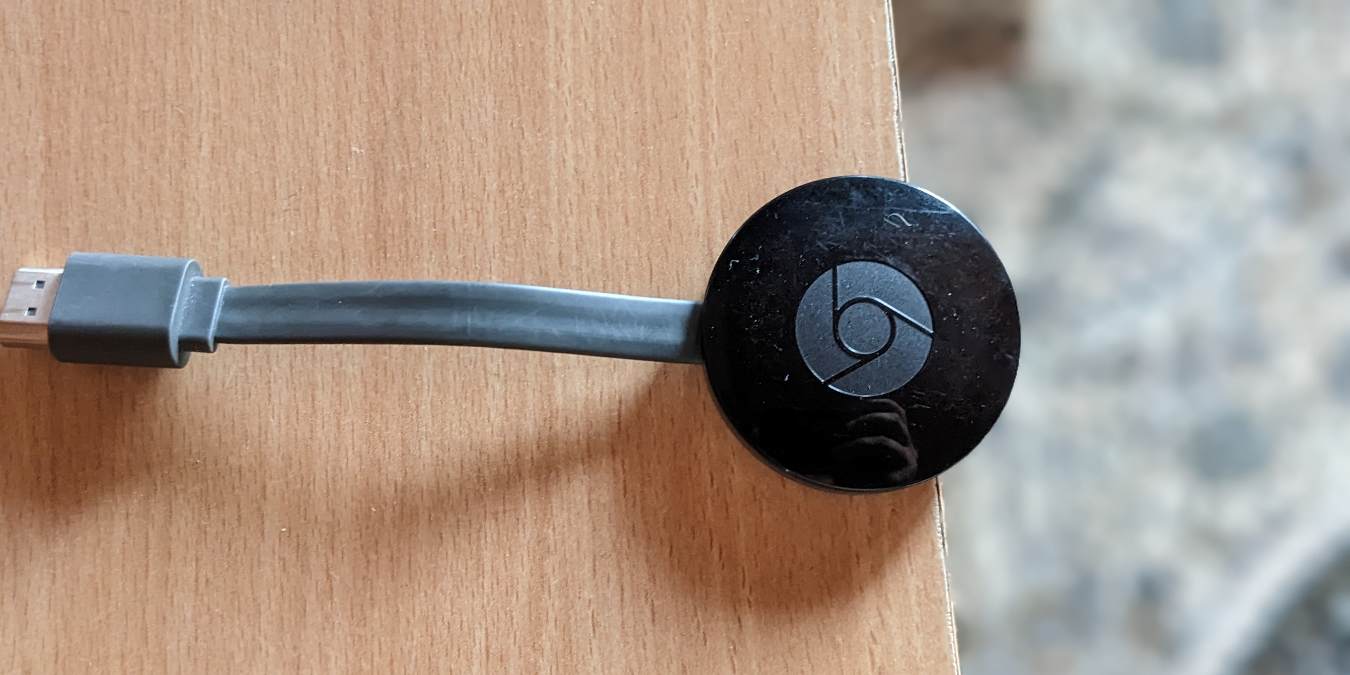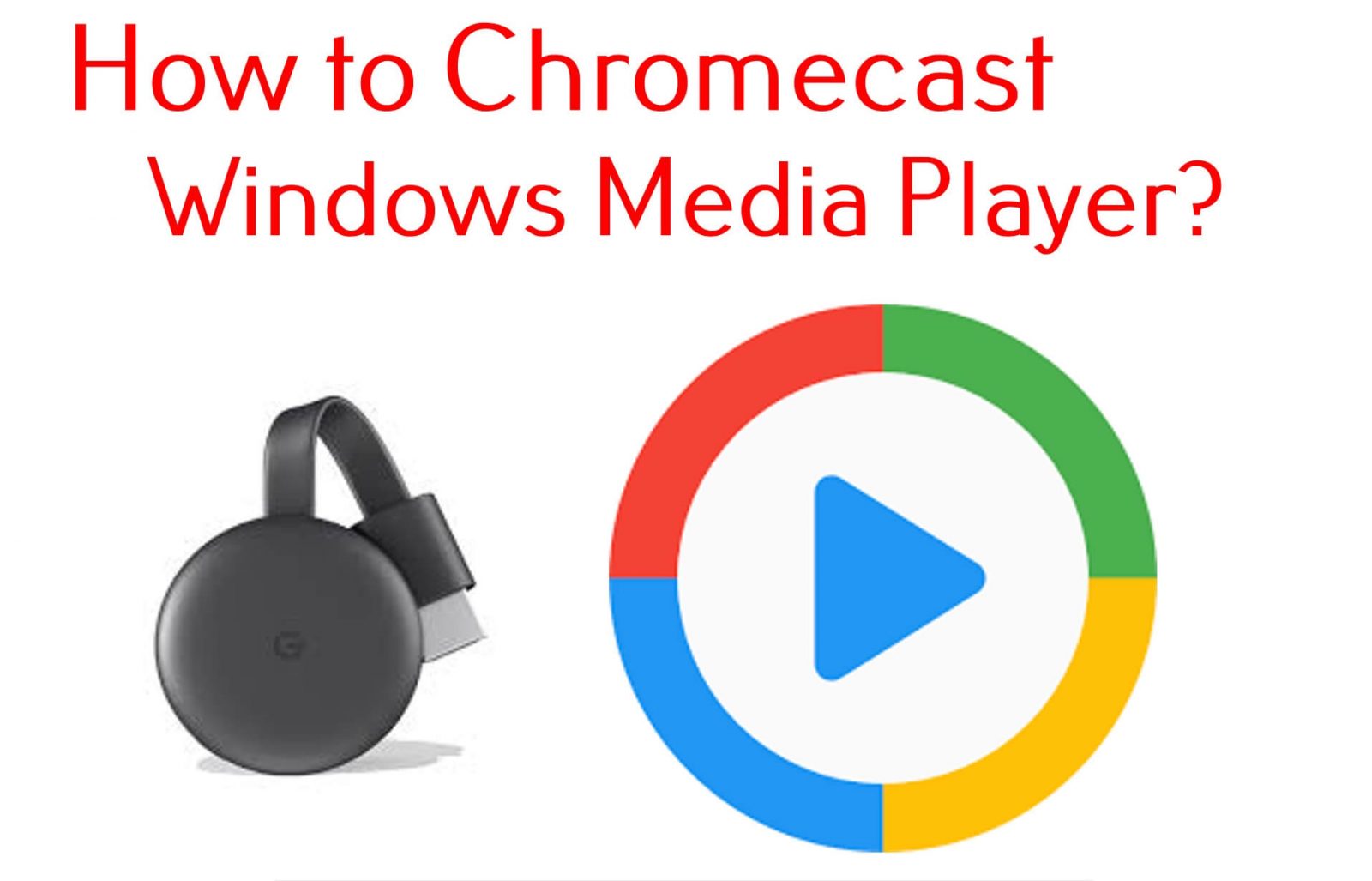Introduction
Welcome to our guide on how to cast AVI on Chromecast. If you’re a video enthusiast, you’ve probably come across the AVI file format at some point. AVI is a popular video container format that is known for its compatibility and wide usage. On the other hand, Chromecast is a fantastic streaming device that allows you to enjoy your favorite media content on your television. While Chromecast offers seamless streaming for many file formats, casting AVI files directly can be a bit tricky. That’s where this guide comes in to help you overcome these challenges and cast your AVI files on Chromecast seamlessly.
Chromecast is a small dongle-like device developed by Google that allows you to stream media content from various sources, such as your smartphone, tablet, or computer, to your television. It connects to your TV’s HDMI port and interacts with your devices via Wi-Fi, enabling you to play videos, music, and even mirror your screen on the big screen.
AVI, which stands for Audio Video Interleave, is a multimedia container format developed by Microsoft in the early 1990s. It has been widely used due to its ability to store both audio and video data in a single file. AVI files are known for their high video quality and compatibility with different media players and devices.
However, playing AVI files directly on Chromecast can be challenging. Chromecast has built-in support for certain file formats like MP4, MKV, and others, but AVI is not natively supported. This means that when you try to cast an AVI file to Chromecast, you might encounter playback issues or the file may not be recognized at all. But don’t worry, we have several methods to help you overcome this limitation and successfully cast your AVI files on Chromecast.
What is Chromecast?
Chromecast is a popular media streaming device developed by Google. It is a small dongle-like device that plugs into your television’s HDMI port, allowing you to stream media content from various sources directly to your TV. With Chromecast, you can turn your regular TV into a smart TV and enjoy a wide range of entertainment options.
Chromecast works by connecting to your home Wi-Fi network and receiving media content from your smartphone, tablet, or computer. It relies on the devices for control and content selection, acting as a bridge between your devices and the television. This means that you can use your smartphone as a remote control and browse through your favorite apps to find and play your preferred media content on the big screen.
One of the key features of Chromecast is its ability to support a vast variety of streaming services and apps. Whether you want to watch videos on YouTube, Netflix, Hulu, or stream music from Spotify, Chromecast provides a seamless streaming experience. Additionally, you can also mirror your device’s screen onto the TV, making it convenient for presentations or sharing photos and videos with friends and family.
In terms of compatibility, Chromecast works with both Android and iOS devices. For Android users, the Google Home app serves as the main control hub for setting up and managing Chromecast. On iOS, the Google Home app is available as well, but you can also use individual apps like YouTube, Netflix, and Spotify to control Chromecast functionality.
Setting up Chromecast is a straightforward process. After plugging the Chromecast into your TV and connecting it to your home Wi-Fi network, you need to follow the on-screen instructions on your device to complete the setup. Once setup is complete, you can start casting media content to your Chromecast by simply tapping the cast button in compatible apps or selecting the Chromecast as the playback device.
Overall, Chromecast is an affordable and versatile streaming device that offers a convenient way to enjoy your favorite media content on the big screen. It eliminates the need for cables and provides a user-friendly streaming experience, making it a popular choice for many entertainment enthusiasts.
What is AVI?
AVI, which stands for Audio Video Interleave, is a multimedia container format developed by Microsoft in the early 1990s. It was designed to store audio and video data in a single file, making it convenient for playback and editing purposes. AVI files have become widely used due to their compatibility with different media players and devices.
AVI files can contain both audio and video streams, which can be encoded using various codecs. Popular codecs used in AVI files include DivX, Xvid, MJPEG, and uncompressed formats. This versatility allows AVI files to accommodate a wide range of video qualities and file sizes.
One of the key advantages of AVI is its support for multiple audio tracks and subtitles. This makes it suitable for movies, where different language options or captions can be included in a single file. AVI files also have the ability to store additional metadata, such as artist names, album information, and other details, making them more organized and informative.
Despite its popularity, AVI does have some limitations. For example, AVI files do not have built-in support for newer video codecs like H.264 or HEVC, which offer better compression and video quality. Additionally, AVI files tend to be larger in size compared to other modern video formats. This can make it challenging to stream or transfer AVI files, especially over limited bandwidth or storage constraints.
When it comes to compatibility, AVI files are supported by a wide range of media players and devices, including software media players like VLC, Windows Media Player, and QuickTime. The ubiquity of AVI support means that you can easily play AVI files on various operating systems, including Windows, macOS, and Linux.
It’s important to note that while AVI is a widely used format, it may not be the best choice for all situations. Depending on your specific needs, you may want to consider other file formats that offer better compression and compatibility with modern devices. However, if you have existing AVI files or prefer the simplicity and wide support of the format, it’s good to know how to cast AVI files on Chromecast for a seamless streaming experience.
Why Casting AVI on Chromecast can be challenging?
Casting AVI files on Chromecast can be challenging due to several reasons. While Chromecast supports a wide range of file formats, including MP4, MKV, and others, AVI is not natively supported. This can lead to playback issues or the file not being recognized at all when attempting to cast AVI files directly.
One of the main reasons why casting AVI on Chromecast is challenging is the difference in file formats. AVI files often use video codecs that are not compatible with Chromecast, such as DivX or Xvid. Chromecast requires files to be encoded in specific formats, such as H.264 or VP9, in order to ensure smooth playback. Since AVI files use different codecs, they need to be converted or transcoded before they can be cast on Chromecast.
Another challenge is that Chromecast does not have built-in support for the AVI container format. While Chromecast can handle various container formats like MP4 and MKV, AVI is not one of them. This means that even if the AVI file is encoded with a compatible video codec, Chromecast may not recognize the AVI container and fail to play the file as intended.
Additionally, AVI files are known for their larger file sizes compared to other modern video formats. This can pose challenges when streaming over a network, especially if the internet connection or Wi-Fi signal is weak. The larger file size can result in buffering issues or delays during playback, detracting from the overall streaming experience.
Moreover, casting AVI on Chromecast may also be hindered by the limitations of the casting app or software being used. Different casting methods or apps have varying levels of support for AVI files, and some may not have the necessary capabilities to transcode the file on the fly for Chromecast compatibility.
Despite these challenges, there are several methods available to overcome them and successfully cast AVI files on Chromecast. These methods involve converting the AVI file to a compatible format, using media players with Chromecast support, or using video streaming apps on your mobile device that can transcode the file in real-time for casting.
By understanding the limitations and challenges involved in casting AVI on Chromecast, you can choose the most suitable method to ensure a smooth and enjoyable streaming experience.
Step-by-step guide to cast AVI on Chromecast
If you’re looking to cast AVI files on Chromecast, there are a few methods you can try. Here is a step-by-step guide to help you cast AVI on Chromecast:
- Method 1: Using a conversion tool
- Start by converting the AVI file to a compatible format. There are various online or desktop conversion tools available that can convert AVI files to formats like MP4 or MKV, which are natively supported by Chromecast.
- Once the AVI file is converted, ensure that the new file is saved in a location that is accessible by your casting device.
- Open the casting app on your device or launch the casting functionality directly from within compatible apps like YouTube or Netflix.
- Select the converted AVI file from the list of available media for casting.
- Choose the Chromecast device you want to cast to and enjoy watching your AVI file on the big screen.
- Method 2: Using a media player with Chromecast support
- Install a media player with Chromecast support on your casting device. Apps like VLC, Plex, or BubbleUPnP can help you cast AVI files on Chromecast.
- Open the media player app and connect it to your Chromecast device.
- Navigate to the AVI file within the media player app, either by browsing your device’s local storage or by connecting to a networked media server.
- Select the AVI file and choose the Chromecast device as the playback destination.
- Enjoy streaming the AVI file on your TV through Chromecast.
- Method 3: Using a video streaming app on your mobile device
- Download a video streaming app that supports real-time transcoding for Chromecast, such as AllCast or LocalCast.
- Open the video streaming app on your mobile device and connect it to your Chromecast device.
- Select the AVI file from your device’s storage within the video streaming app.
- Choose the Chromecast device as the playback destination.
- The app will transcode the AVI file in real-time and stream it to your Chromecast for playback.
These step-by-step methods provide different options for casting AVI files on Chromecast, allowing you to choose the method that best suits your needs and preferences. Regardless of the method you choose, you’ll be able to enjoy your favorite AVI files on the big screen with Chromecast.
Method 1: Using a conversion tool
One effective method to cast AVI files on Chromecast is by using a conversion tool. This method involves converting the AVI file to a compatible format that can be recognized and played by Chromecast. Here’s a step-by-step guide on how to use a conversion tool to cast AVI on Chromecast:
- Start by identifying and selecting a reliable online or desktop conversion tool that supports AVI to Chromecast-compatible format conversion. There are many conversion tools available, both free and paid, that can perform this task.
- Once you’ve chosen the conversion tool, visit the tool’s website or launch the desktop application.
- Upload the AVI file that you want to cast on Chromecast using the conversion tool’s upload interface. Some tools may require you to upload the file from your local storage, while others might support direct input from a URL or cloud storage.
- Select the output format for the conversion process. Choose a format that is supported by Chromecast, such as MP4 or MKV. These formats are widely recognized by Chromecast and ensure compatibility for smooth playback.
- Configure any additional settings provided by the conversion tool, such as resolution, bitrate, audio settings, or any customizations you prefer.
- Initiate the conversion process by clicking on the convert/start button. The tool will then convert the AVI file to the specified output format.
- After the conversion is complete, download the converted file to your device’s storage. Ensure that the file is saved in a location that is accessible by your casting device.
- Open the casting app on your device or launch the casting functionality directly from within compatible apps like YouTube or Netflix.
- Select the converted AVI file from the list of available media for casting.
- Choose the Chromecast device you want to cast to and enjoy watching your AVI file on the big screen.
By following these steps and using a conversion tool, you can successfully convert and cast your AVI file on Chromecast. This method ensures compatibility between the AVI file and Chromecast, allowing you to enjoy your favorite videos seamlessly on your TV.
Method 2: Using a media player with Chromecast support
If you want to cast AVI files on Chromecast without the need for conversion, using a media player with Chromecast support is a great option. Many media players have incorporated Chromecast functionality, allowing you to stream AVI files directly to your TV. Here’s a step-by-step guide on using a media player with Chromecast support to cast AVI on Chromecast:
- Start by identifying and installing a media player app on your casting device that supports Chromecast. Popular media players like VLC, Plex, or BubbleUPnP have integrated Chromecast support, making them suitable for casting AVI files.
- Open the media player app and ensure that your Chromecast device is connected to the same Wi-Fi network as your casting device.
- Navigate to the AVI file within the media player app. You can browse through your device’s local storage, connect to a networked media server, or access files from cloud storage services.
- Select the AVI file that you want to cast to Chromecast.
- In the media player app’s playback interface, look for the cast icon or Chromecast icon. It’s usually located in the top-right or bottom-right corner of the app’s interface.
- Tap on the cast icon and choose your Chromecast device from the available list of devices.
- Once connected, the media player app will start streaming and casting the AVI file to your Chromecast device.
- On your TV, you should see the AVI file being played through Chromecast, allowing you to enjoy your video on the big screen.
Using a media player with Chromecast support eliminates the need for file conversion and allows you to cast AVI files to Chromecast effortlessly. These media players are designed to handle a variety of file formats, including AVI, and provide smooth playback on your TV. Ensure that you have the latest version of the media player app installed to take advantage of any improvements or added features related to Chromecast casting.
By following these steps, you can easily cast your AVI files on Chromecast using a media player app. Enjoy your favorite AVI videos on the big screen without the hassle of file conversion.
Method 3: Using a video streaming app on your mobile device
If you prefer the convenience of casting AVI files on Chromecast directly from your mobile device without the need for conversion or a media player, you can use a video streaming app that supports real-time transcoding. These apps can transcode the AVI file on-the-fly and stream it to Chromecast. Here’s a step-by-step guide on using a video streaming app to cast AVI on Chromecast:
- Start by identifying and downloading a video streaming app that supports real-time transcoding for Chromecast. Popular options include AllCast, LocalCast, or Plex.
- Launch the video streaming app on your mobile device and ensure that your Chromecast device is connected to the same Wi-Fi network.
- Within the video streaming app, locate and select the AVI file that you want to cast. You can usually access the files stored on your mobile device or even connect to cloud storage services.
- Once you have selected the AVI file, tap on the cast icon or Chromecast icon within the video streaming app. This initiates the casting process.
- Choose your Chromecast device from the list of available devices to cast the AVI file.
- The video streaming app will start transcoding the AVI file in real-time, converting it to a compatible format for Chromecast.
- The app will then stream the transcoded video to Chromecast and you can enjoy watching the AVI file on your TV.
Using a video streaming app for casting AVI on Chromecast eliminates the need for file conversion or a media player. These apps leverage real-time transcoding to convert the AVI file on-the-fly, ensuring compatibility with Chromecast and providing smooth playback on your TV screen.
Make sure you have the latest version of the video streaming app installed on your mobile device to benefit from any improvements or additional features related to Chromecast casting. Also, note that real-time transcoding may consume additional resources on your mobile device, so a device with sufficient processing power is recommended for optimal performance.
By following these steps, you can easily cast your AVI files on Chromecast using a video streaming app. Enjoy your favorite AVI videos on the big screen from the convenience of your mobile device.
Troubleshooting common issues
While casting AVI files on Chromecast can be a seamless experience, you may encounter some common issues along the way. Here are a few troubleshooting tips to help you resolve these issues and ensure a smooth casting process:
- Check file compatibility: Ensure that the AVI file you are attempting to cast is supported by Chromecast. While some media players or casting apps can handle a wide range of file formats, compatibility issues may arise with certain AVI files that use uncommon codecs or file extensions.
- Verify network connectivity: Make sure that your casting device, Chromecast, and Wi-Fi network are all connected and functioning properly. Network connection issues can cause interruptions in casting and result in playback issues or buffering.
- Update casting apps and firmware: Keep your casting apps, media players, and Chromecast firmware up to date. Software updates often include bug fixes, performance improvements, and added compatibility for file formats, ensuring a better casting experience.
- Restart casting devices: If you experience any glitches or playback issues, try restarting your casting device, such as your smartphone, tablet, or computer. Restarting can resolve software or connectivity issues that may be affecting the casting process.
- Reset Chromecast: If you’re encountering persistent issues, you can try resetting your Chromecast device to factory settings. This can help resolve any underlying configuration or software problems that may be causing casting issues.
- Ensure sufficient Wi-Fi signal strength: Weak Wi-Fi signals can lead to buffering and playback issues. Position your Wi-Fi router closer to the Chromecast device or consider using Wi-Fi extenders or mesh network systems to improve the signal strength in the casting area.
- Try alternative casting methods: If your chosen method of casting AVI files is not working smoothly, consider trying alternative methods. Use a different conversion tool, media player, or video streaming app that supports AVI casting to Chromecast. Sometimes different apps or tools may offer better compatibility or performance.
- Use wired connections: If you’re still experiencing issues with casting AVI files, you can try using a wired connection instead of relying solely on Wi-Fi. Some older Chromecast models support Ethernet connectivity, which can provide a more stable connection for smoother playback.
By following these troubleshooting tips and adjusting settings accordingly, you can overcome common issues and ensure a more enjoyable casting experience when working with AVI files and Chromecast.
Conclusion
Casting AVI files on Chromecast may pose a challenge due to the format’s compatibility limitations with the device. However, with the methods and techniques mentioned in this guide, you can successfully cast AVI files on Chromecast and enjoy your favorite videos on the big screen.
We explored three different methods for casting AVI files on Chromecast. The first method involved using a conversion tool to convert the AVI file to a compatible format before casting. The second method focused on using a media player with Chromecast support to directly stream the AVI file to the device. Lastly, using a video streaming app with real-time transcoding capabilities allowed for on-the-fly conversion and seamless casting of AVI files.
When encountering issues during the casting process, the troubleshooting tips provided in this guide can help address common problems. Verifying file compatibility, checking network connectivity, updating apps and firmware, and trying alternative casting methods are some of the effective troubleshooting steps.
Remember to choose the method that suits your needs and preferences. Each method has its advantages and may be more suitable depending on the specific requirements of your AVI files and casting setup.
With the proper tools, techniques, and troubleshooting methods at your disposal, you can overcome the challenges of casting AVI files on Chromecast and enjoy a seamless streaming experience. Convert, stream, and cast your AVI files to Chromecast, and immerse yourself in the entertainment of your choice on the big screen.







